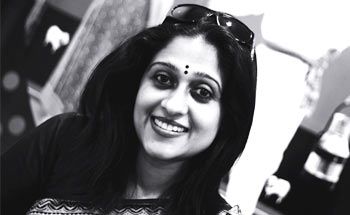
Radio has a history of preserving the traditional music of this country, its folk and classical forms.
The public service broadcaster – All India Radio – has kept this legacy alive for over 80 years now. It is unfortunate that our FM policy and lawless copyright regime does not allow commercial FM players to be as versatile and experimental in their programming as they can be, to reflect India's diverse musical traditions. They are compelled to live with a limited repertoire of film music, and survive on bland and unimaginative playlists
In spite of a hostile FM policy, south India has had considerable success with commercial radio. During Phase II of FM licensing, a remarkably large number of regional players from the south bid for frequencies. FM radio found takers in all the 18 southern cities where frequencies were auctioned, unlike the north where many frequencies went a-begging and city after city went without a private radio station. From Mangalore to Rajamundry, from Tirunelveli to Kannur, every Phase II city in the south has at least one radio station Incidentally there are 15 players who forayed into FM radio in the south; out of which at least 10 are regional players.
Radio penetration in key metros in the South is significantly higher than in other regions. According to IRS 2009, radio penetration in Chennai is 42 per cent, and 35 per cent in Kochi and Bangalore. In comparison, Delhi has barely 28 per cent radio penetration, and the corresponding figure for Mumbai is even lower. We can assume that a key factor driving this high appeal of radio in the south is the quality of its regional language offerings, which are localized not just to the state but to urban and rural areas within the state. Regional players have the advantage of knowing the local market and local ethos, and for obvious reasons localization favors print and radio more than any other medium. Though a broadcaster with a national footprint with 41 stations, localization is at the core of Red FM's programming and marketing initiatives in all the cities we are present in.
The re-launch of SFM into Red FM was arguably the biggest re-launch in the history of FM radio in India. The Red FM philosophy of being the station of expression for the masses is enhanced by the localization which is done by taking up local issues and being a part of the local city culture and ethos. At Red FM; RJ talk in local language, local music, and city centric issues and varied, interactive and differentiated programming help in reaching out to the masses. The advertising community can use radio in South India effectively by using the last mile connect that radio provides to the ultimate consumer
After setting up radio stations across the country, I am convinced that the future of radio lies in smaller towns, and it's a fact that smaller markets respond better to local programming Unlike cities in the south, most cities in the north and west have an exaggerated dependence on Bollywood music, and this is something of a mystery: it is not as if these regions don't have their own popular music. For instance, who can deny that the Marathi music industry is exceptionally vibrant? Yet how many radio stations in Maharashtra can boast of an extensive Marathi playlist? Bhojpuri music has over 50,000 songs in its database but these songs, as popular as they are on the street, get scant play-out on radio. This is an unacceptable rebuff to the regional music industry, and – as the listenership figures and bottom-lines show – there's no pay-off for the radio business either.
Most radio stations in the south play local music and they continue to be the most popular radio stations in their city. Red FM, Club FM and Mango play almost nothing but Malayalam film music in Kerala. Radio Mirchi's playlist in Kochi is dominated by Malayalam songs, while their Chennai channel is just as determinedly Tamil. This marked preference for local language programming is just as true of the other southern states (and, it must be admitted, a few other places like Orissa as well), and it serves as a contrast to the one-size-fits-all approach to FM broadcasting north of the Vindhyas. It is worth asking if this has any causal effect on the higher penetration of radio in the south (22.4 per cent), compared to the national average of 19.5 per cent.
Admittedly, the music industry in the south is better organized than regional music industries elsewhere in India. They churn out regular hits and these songs have a higher shelf-life than most Bollywood releases, which have a half-life that can seemingly be counted in hours rather than weeks or even days. Radio in the south has been integral to the promotion of regional cinema, but it's not just film music that has enriched the radio experience in these four states. A number of independent musicians and bands are also promoted over radio.
It is no secret that most commercial FM players in the south are part of large media houses that have substantial investments in print and television, making content integration and cross promotions not just easy but inevitable. No doubt this has made radio a more effective medium in the south
The spirit of place goes beyond the music that's played on south India's FM channels – it's also a part of the issues that are discussed on air and the RJ talk, which are sometimes so self-referential and so local that it can sound like Greek to an outsider. Though FM companies have been fighting for the right to network their stations, I hope it will not be at the cost of their local and unique identities, the very qualities that have made south Indian FM channels so popular with their listeners.
------------------------------------------------------------------------------------------------------------------
Red FM Sr Vice President (Programming & Projects) Nisha Narayanan